This is a continuation of a series of posts on the Sony a7III. You should be able to find all the posts about that camera in the Category List on the right sidebar, below the Articles widget. There’s a drop-down menu there that you can use to get to all the posts in this series; just look for “a7III”.
In the a7 and a7II, shutter drive mode affected the precision of the raw files and the read noise, and thus the Engineering Dynamic Range (EDR). I am pleased to report that the a7III has made significant progress here, and you don’t have to worry nearly as much about shutter drive mode.
In the single shot (SS) mode, you have three choices for shutter operation: all-mechanical (MS), electronic first-curtain shutter (EFCS), and silent shutter, which I’m calling ES so as not to get it confused with single shot. Here is the EDR for single shot operation for all three shutter modes.
The electronic shutter doesn’t allow the use of ISO settings 50, 64, and 80, so they aren’t plotted above. Looks like I didn’t plot ISO 100 for the ES mode, either; oops. I haven’t included a legend since the curves are all on top of each other. The ISOs below 100 provide no increase in EDR over those above 100, and in some cases afford less EDR. I recommend staying away from these “fake ISOs”.
In continuous low (CL) shutter drive mode:
There is no difference. That’s wonderful.
Now let’s look at the improvement in EDR over what would be the case if the camera were ISOless. I’ll drop the ISOs below 100 for this. The graphs are normalized so that base ISO is 0 stops improvement.
First in single shot mode:
If the camera were ISOless, we’d see a flat line at 0. Positive values indicate that the camera offers better performance than an ISOless camera. You can see that the camera is nearly ISOless from ISO 250 to 500, and from 640 on up.
The same is true in CL mode:
All the above plots were made with uncompressed raw turned on. In many Sony alpha 7 cameras, raw compression exacts no EDR penalty. But the analog to digital converter (ADC) in the a7III appears to be better than before. Let’s compare compressed and uncompressed raw in single shot mode with the mechanical shutter:
You can see that, at base ISO, compression costs up about a tenth of a stop of EDR. That’s not enough to worry about.
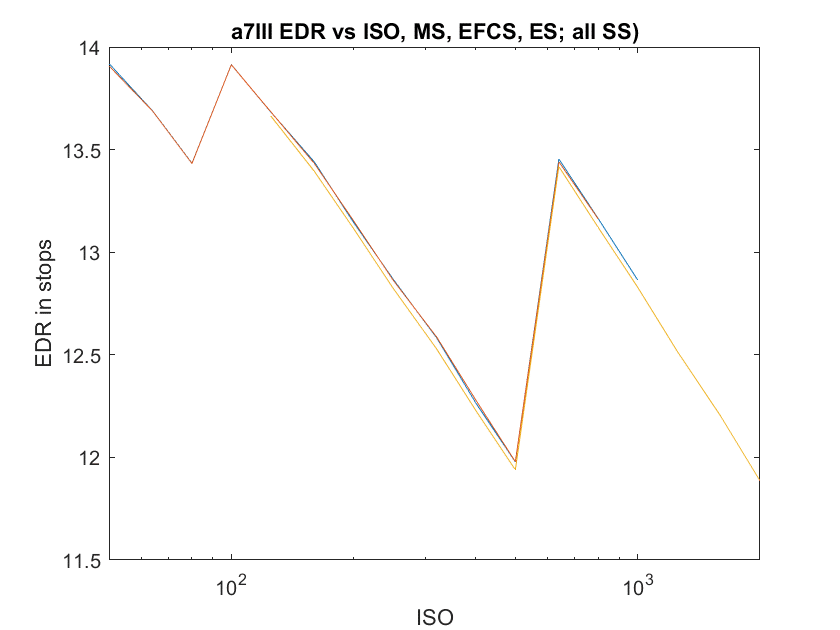
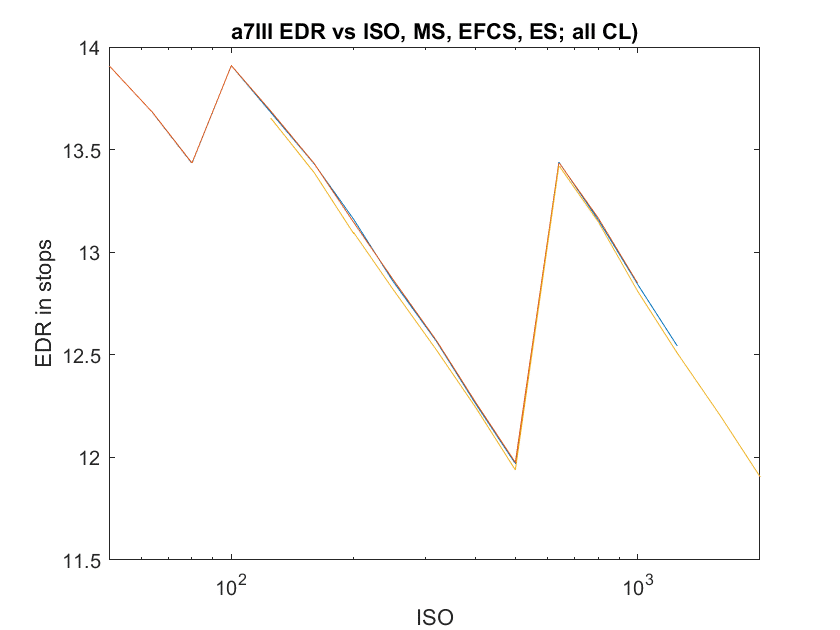
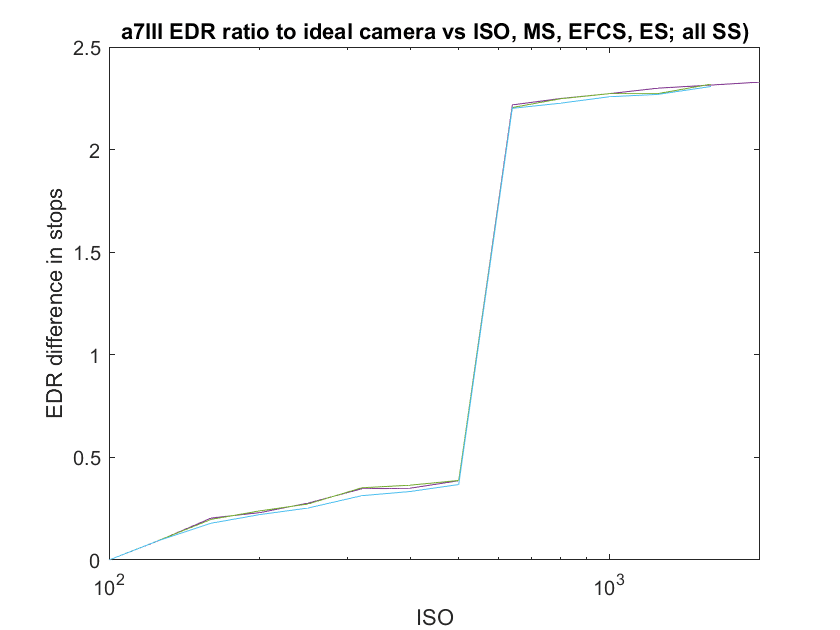
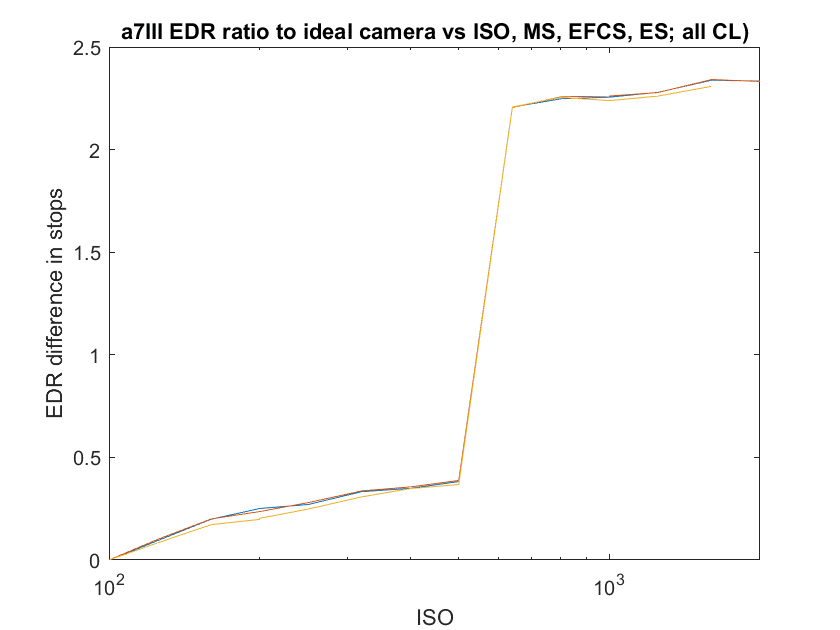
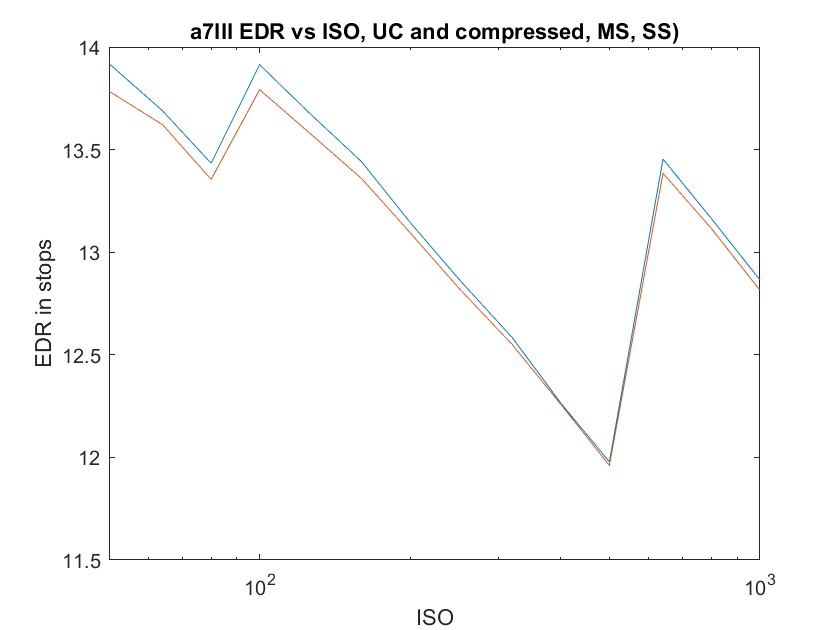
Leave a Reply